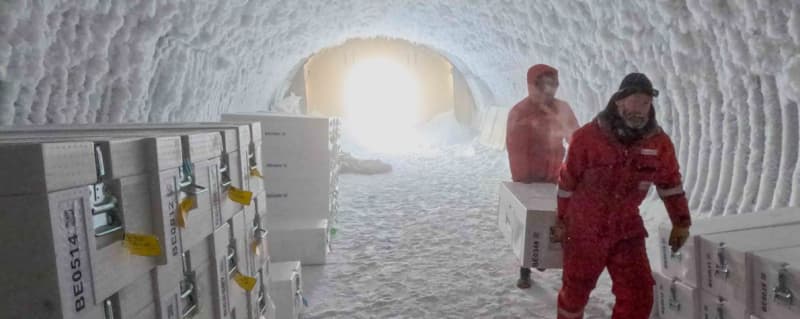
Scientists to Melt Ancient 1.5m-Year-Old Ice for Clues
An ice core, potentially older than 1.5 million years, has been brought to the UK for scientists to analyze and extract crucial information about Earth's climate. The ice core, the oldest on the planet, was drilled from deep within the Antarctic ice sheet.
Stored in an ice cave in Antarctica, the ice cores were then transported to the British Antarctic Survey in Cambridge. Dr. Liz Thomas, the head of ice core research at the British Antarctic Survey, highlighted the significance of this unknown period in Earth's history.
Over the next seven weeks, a team will slowly melt the ice cores to reveal ancient dust, volcanic ash, and marine algae that were trapped inside when the water froze. These materials can provide insights into wind patterns, temperature, and sea levels over a million years ago.
The ice cores were extracted in Antarctica through a multinational effort, costing millions of dollars. The ice blocks were transported to Cambridge, where they will be melted and analyzed in a lab equipped with specialized machinery.
Dr. Thomas mentioned that the ice cores could hold evidence of a time when carbon dioxide concentrations were as high as they are now, over 800,000 years ago. This research aims to understand past climate changes and their implications for the future.
Scientists will use an instrument called an inductively coupled plasma mass spectrometer to analyze chemical isotopes in the liquid from the melted ice cores. This analysis will shed light on wind patterns, temperatures, and rainfall from up to 1.5 million years ago.
The ice cores may provide insights into the Mid-Pleistocene Transition, a period 800,000 to 1.2 million years ago when Earth's glacial cycles changed. This transition from 41,000-year to 100,000-year cycles remains a key question in climate science.
Understanding past sea levels and the behavior of Antarctic ice sheets is crucial for addressing concerns about sea level rise in the current century. The research team hopes that the ancient environmental history preserved in the ice cores will offer valuable guidance for the future.